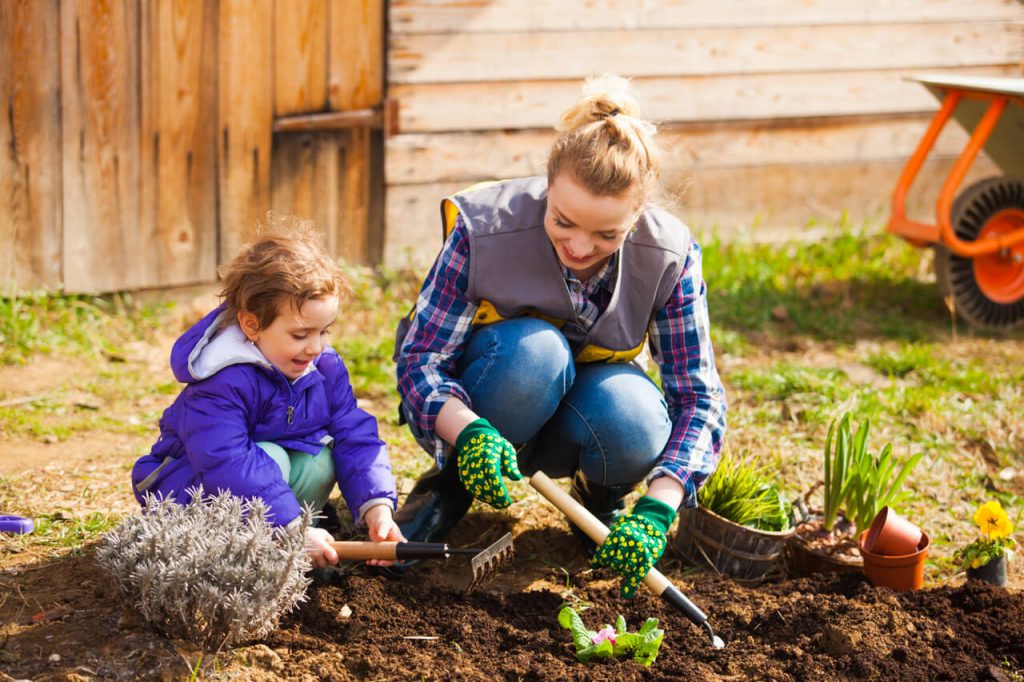With plenty of time at home, it’s the perfect time to start a garden. Whether you have a green thumb or you’re a beginner gardener, here are some easy steps to growing your own veggies!
Spring in Michigan is never easy. The weather plays games with your head. A week of 70-degree days doesn’t mean the snow won’t come back. But starting a garden can help put the seasons in perspective, and give you time with your kids (and nature) that is irreplaceable.
My husband and I started formally gardening when we began dating. Over the years we’ve moved from some pots on a slab of cement in Washington, D.C. to three eight-foot garden beds, two flower gardens (and still many pots) in our backyard in Royal Oak. We’ve learned a ton along the way, and have found fun ways to now include and teach our kids.
Getting started on a garden:
1. Start seeds. Seed packets are at department and hardware stores beginning in January. I’ve started ordering online from Annie’s Heirloom Seeds and Baker Seeds. (Note that plants like tomatoes and peppers need to be seeded 10-12 weeks before the last frost. Other veggies like squash, cucumbers, beans and peas can all be seeded later in the season with success)
Starting plants from a seed is a great way to learn about the process of growing. Kids love putting little seeds into tiny pots – and seeing the end result is a lifelong lesson.
OR
Plant plants. If starting plants from seed sounds overwhelming, pick up plants at a department/hardware store or at a farmers market and plant them directly. You can use space in the ground (dig up the grass first), pots or construct easy garden beds with some 2x4s for a raised bed.
Most plants can’t go into the ground or be outside permanently until mid to late May. Memorial Day weekend is usually a pretty safe bet for finally getting the plants into the dirt.
Some good starter plants are tomatoes, cucumbers, beans, peas, and even squash (although you’ll need a little room out or up for those). Many herbs are also easy to grow, and those will last well into November in many cases.
2. Water (and be patient). Every plant is different, but water is critical for all of them. Get your hose or watering cans out and visit the plants at least every other day (every day in the height of summer). This is another great way to include your kids. Buying them a small watering can gives them an unrivaled sense of involvement and accomplishment. (They also love shovels).
It can be hard to wait for the first veggies to pop, but consider keeping a photographic journal with your kids documenting how the plants are changing every week. It will be amazing to watch tiny leaves grow into mature plants as the days get longer.
3. Enjoy the fruits of your labor.
Running out to the garden to grab fresh peas and tomatoes is the highlight of my kids’ summers – and an EASY way to get them to finally eat vegetables after the long, dark winter without greens in their bodies (anybody else with me on that?!).
Supplement your garden and find fresh food at a local farmers market.
Check out our Guide To Metro Detroit Farmers Market to find one near you.








